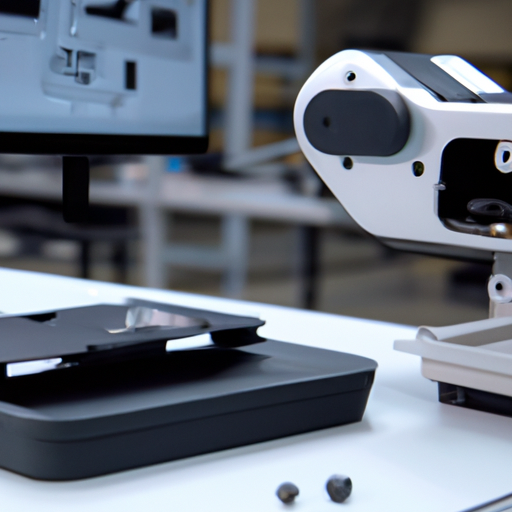There are a lot of misconceptions about Robotic Process Automation that has been circulating in the IT space. As robotic process automation (RPA) grows in popularity and use, it’s important to separate the myths from the facts. Here are five of the most common myths about robotic process automation
The Myths About Robotic Process Automation and the Facts
1. RPA is not secure
Many people think that RPA is not secure and that it is only useful for simple, repetitive tasks. However, this is not the case. RPA can be used for a variety of tasks, including those that are complex and require sensitive data.
RPA can help improve security for businesses. It can automate tasks that are typically done by humans, such as password resets and accessing data from multiple systems. This means that there is less of a chance for human error, and businesses can rest assured that their data is safe and secure. Also, automation sticks to the code and the process, whereas individuals might take an opportunity; to print, or copy and paste the data to an outside external source.
Some ways by which the security of RPA can be guaranteed are
- Ensuring accountability for bot actions by assigning a special identity to every RPA bot and process.
- Implementing password and username authentication along with a two-factor human-to-system will also enhance security against cyberattacks.
- By protecting log integrity by storing RPA loggings in a secured system to ensure its safety.
2. RPA Cannot Automate Complex Tasks
The second myth about RPA is that it cannot automate complex tasks. On the contrary, RPA can indeed automate complex tasks, and it can be used to perform activities that would otherwise require significant human intervention.
For example, RPA can be used to identify and categorize unstructured data (data that are stored according to a particular format) such as images and text documents. This is something that would normally take human days to accomplish, yet an automated bot will do it in a fraction of the time or minutes.
Furthermore, RPA solutions can be integrated with APIs or other software programs, so they’re able to perform even more sophisticated automation tasks with minimal human intervention. This means that RPA solutions have the potential to drastically reduce the time required for manual processes, making them a highly effective tool for automating complex tasks.
3. RPA Will Replace Human Workers
The third myth can be dispelled with a simple fact: automation aren’t here to take away your job. Quite the contrary! RPA creates more opportunities for humans and enhances our ability to work smarter, faster, and better. The idea is for employees to focus on more analytical and added-value tasks.
One of the key benefits of RPA is its ability to automate mundane tasks that take up most of our day-to-day, giving people more time to focus on higher-value tasks. This will result in an improved job satisfaction level for workers, as they are no longer bogged down in manual process execution but rather get to tackle more meaningful challenges and projects. Additionally, your company may benefit from improved process quality, reduced time to market, and direct cost savings.
So when it comes down to it, RPA can be seen as a tool that supports us in our daily work—not replace us!
4. RPA Is Too Difficult to Operate
This is not the case at all. RPA can be operated by anyone familiar with basic computer functions. You don’t need to be a programmer or a coder to use RPA software. It is designed to be user-friendly and easy to operate.
For example, Automation Anywhere presents an RPA tool for finance and Accounting. With this tool, you do not need to be familiar with any tech code or language. This tool can help automate your invoice billing, process invoices, create purchase orders, and collate data for budgeting and reporting.
5. RPA Is Only Good for Big Companies
This is one of the most common myths about RPA, and it simply isn’t true. RPA can be a great fit for any company size.
RPA is perfect for small businesses because it helps automate simple, repetitive tasks that can free up employees’ time so they can focus on more important work. A tool like akaBot has been found useful by small and even medium-scale companies. With this tool, you can handle simple tasks such as invoice matching ( for invoice processing) and Timekeeping (a time-tracking tool for your business that helps measure and boost your employee’s productivity). This tool allows both small business owners to try it for free within the first two months of registration.
6. RPA is expensive to implement.
Many people have had different opinions regarding the cost of implementing RPA for business. The good news is that RPA can be implemented by SMEs and large enterprises. But, different factors determine the cost of integrating RPA. These factors include; the vendor, the complexity of the RPA software, time spent on the business analysis, and the programming required.
To effectively deploy RPA tools for your business, you can look at core business areas such as marketing, finance, human resources, or customer service that need more tools to increase their productivity.
No matter what size your company is, RPA has the potential to improve your bottom line.
What Robotic Process Automation (RPA) Means
Robotic Process Automation (RPA) is often misunderstood, and these five myths are just the tip of the iceberg. To get to the heart of what RPA is all about, we need to look beyond these common misconceptions.
At its core, RPA is a set of technology tools that allow businesses to automate mundane and repetitive tasks quickly, accurately, and affordably. This automation can involve anything from data entry, invoicing, human resources, and marketing to customer service applications, and it has the potential to drastically reduce costs while improving customer experiences.
By using artificial intelligence (AI) to automate processes that are too complex or too tedious for humans, RPA helps businesses save time, money, and resources while eliminating human errors. In short, it’s a revolutionary tool for transforming the way companies do business today.
Conclusion
So, what have we learned? We’ve debunked five myths about robotic process automation and what they truly mean. We hope this provides you with a better understanding of robotic process automation and the value it can bring to your business.
If you’re still unsure about whether robotic process automation is the right solution for your needs, reach out to our team for a free consultation. We’d be happy to answer any questions you have and help you determine if robotic process automation is the right solution for your business.
At Garrick Solutions, we’re happy to discuss any challenges you might have in implementing RPA for your business. We help you improve your productivity by finding a solution that fits your company’s size, industry, and financial budget. We aim to support you in long-term, cost-effective, sustainable growth.
We provide a variety of solutions in Robotic Process Automation (RPA), Resource Management, Cybersecurity Assessments, Business Process Improvements, and consultancy services to assist businesses in their growth.
Contact us today for a chat about how to use technology strategically to grow your business.

Robotic Process Automation
Blog Categories
Feel free to get in touch with our expert.
Other related articles
Emerging Chatbot Trends: AI Technology, NLP, Sentiment Analysis & Multi-Language Support for Customer Support
Enhancing healthcare through intelligent conversation. Enhancing Mental Health Support and...
Read MoreHow to Get Started with AI and RPA
Introduction to AI and RPA: A Beginner’s Guide Artificial Intelligence...
Read MoreAI and RPA for Customer Service
The Impact of AI and RPA on Customer Service: Enhancing...
Read More


